ESRL Global Monitoring Division Review
Boulder, Colorado — April 3-5, 2013
Science Themes for GMD Review:
1. Climate Forcing:
Earth’s climate is changing largely because of increasing greenhouse gases in the atmosphere; modified to some extent by the distribution of aerosols and aerosol properties. To understand the influence of changing atmospheric composition on climate change and minimize its eventual magnitude, societies need the best possible information on the trends, distributions, sources, and sinks of atmospheric substances that influence climate. For effective management of climate forcing atmospheric species, a solid scientific understanding of their natural cycles and the processes that influence those cycles is necessary. Atmospheric measurements are the touchstone of models and theories describing these cycles. Providing a sound basis for important societal decisions requires a global effort that involves studying numerous gases, particles, and atmospheric radiation on appropriately designed spatial and temporal scales.
NOAA measurements of climatically important gases began in the 1960s and expanded in the mid-1970s for carbon dioxide (CO2), nitrous oxide (N2O), chlorofluorocarbons (CFC's), and ozone (O3). Over the years other gases have been added, including methane (CH4), carbon monoxide (CO), hydrogen (H2), numerous hydrochlorofluorocarbons (HCFC's) and hydrofluorocarbons (HFC's), methyl halides, and sulfur hexafluoride (SF6). GMD produces and maintains global standards for most of the climate relevant gases.
The original objective of GMD "baseline" aerosol measurements was to detect a response to changing conditions on a global scale. Since the 1970s our understanding of the behavior of atmospheric aerosols has improved considerably. In response to the finding that anthropogenic aerosols create a significant perturbation in the earth's radiative balance on regional scales, GMD expanded its aerosol research program (1992) to include stations for monitoring aerosol properties in regions where significant aerosol forcing was anticipated.
2. Ozone Depletion:
Research by GMD has been critical in determining the degree of depletion of stratospheric ozone, measuring the trends of the compounds causing this depletion, and understanding the causes and consequences of stratospheric ozone loss. GMD conducts year around balloon-borne vertical structure and total column optical measurements of ozone over the South Pole. During the winter preceding the early springtime Antarctic ”ozone hole”, satellites are unable to measure polar ozone without sunlight. GMD also monitors stratospheric ozone at lower latitudes and in the Arctic, monitors the gases responsible for depletion of the stratospheric ozone, and monitors changes in ultraviolet radiation. As such, understanding the production and fate of ozone and the ozone depleting compounds is a focal point of GMD research.
Ground based measurements of total-column ozone have been made for over 40 years with the Dobson spectrophotometer; the 16-station GMD Cooperative Dobson Network is a significant portion of the global Dobson network as are the fourteen GMD balloon-borne ozonesonde stations. These stratospheric ozone measurements, along with the GMD greenhouse gas, surface ozone, aerosols, radiation and halocarbons measurement networks are linked to the world calibration standards maintained by GMD as are a preponderance of the stations in other international global networks
Three gases that make a significant contribution to stratospheric ozone depletion, CFC-11, CFC-12 and N2O, have been monitored by GMD since the mid-1970s. Since then, numerous additional CFC's, HCFC's, and other halogenated gases have been incorporated into the measurement program as the number of monitoring sites increased. Most of the gases that are responsible for depleting stratospheric ozone are anthropogenic, but some, such as methyl bromide and methyl chloride have natural contributions as well.
3. Baseline Air Quality:
Although much of GMD's effort has focused on obtaining global long-term measurements of the remote atmosphere, scientifically it has been necessary to make some observations at sites that are regionally influenced. This allows GMD to investigate the linkage between global and regional distributions and sources of climatically important gases. Examples include sampling sites at Harvard Forest, Massachusetts, and Niwot Ridge, Colorado, and on ~500 meter tall towers such as those in Wisconsin, Iowa and Texas conducting carbon cycle measurements.
In recent years, it has become even more apparent that air masses can carry pollution long distances, over which compounds are transformed during transport. For instance, large-scale pollution and dust from Asia is transported across the Pacific Ocean in a matter of days and impacts sites in the United States. Fires in Central America send smoke plumes across Mexico and the South-Central U.S., and dust from Africa regularly reaches the south-eastern U.S.
GMD added a baseline station at Trinidad Head, California, in 2002 to help monitor incoming air pollution from Asia. At about the same time, an observatory was established at Summit, Greenland in cooperation with the National Science Foundation, to monitor pollution entering the Arctic from lower latitudes and to serve as the sole high-altitude Arctic atmospheric observatory documenting changes in the Arctic free troposphere.
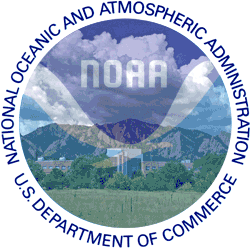
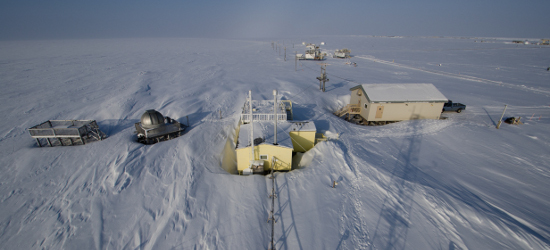
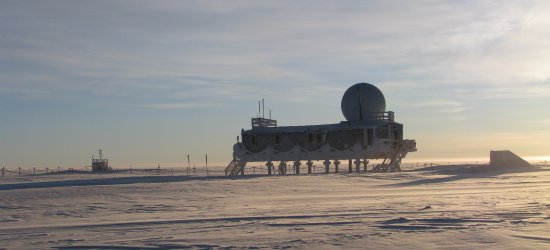

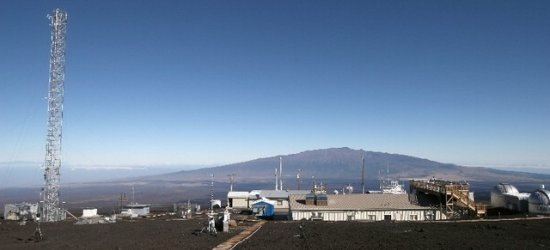

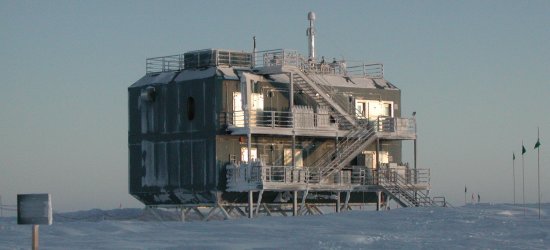
First row: Barrow, Alaska and Summit, Greenland; Second row: Trinidad Head, California and Mauna Loa Hawaii; Third row: American Samoa and South Pole
